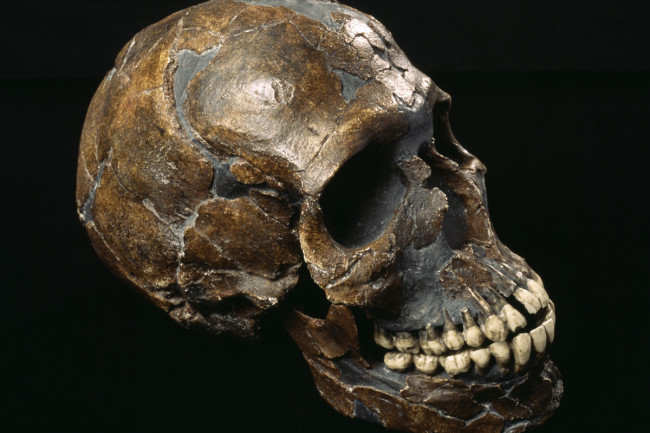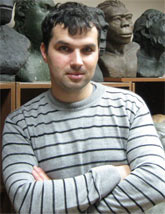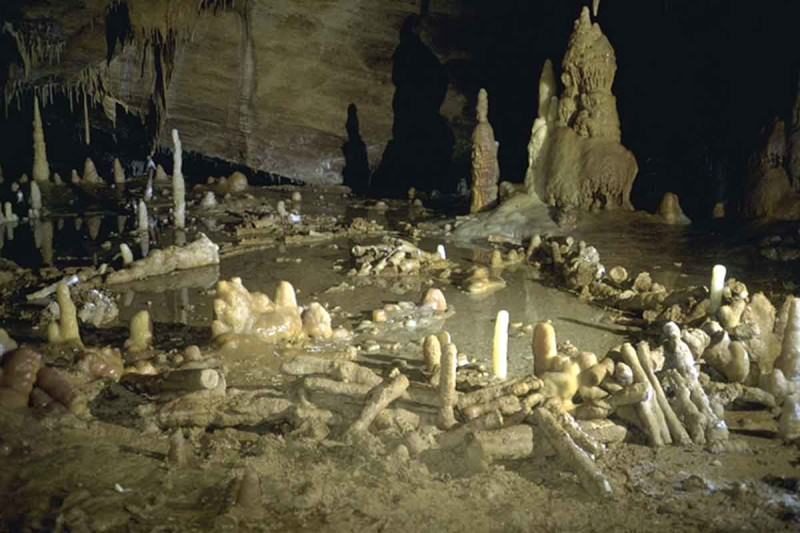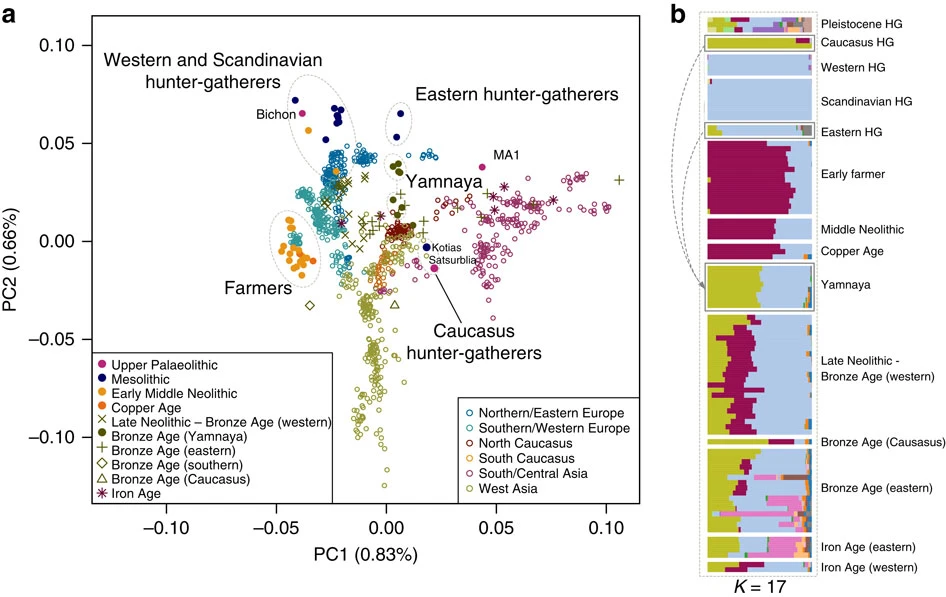A few more connections, utilizing what shijing collected back in the Kantek thread:
The Kantekkians arrived in the Caucasus "and regions surrounding". Where'd they go next, after that? In reference to Kantek, the Cs said "We have close affiliation with the 'Northern Peoples.'" Then they said the Kantekkians "took over the northern section" of Atlantis, which sounds like northern Eurasia to me. Then, after the destruction of Atlantis (Younger Dryas impact), they moved around:
Makes sense. The Kantekkians didn't immediately and exclusively go to the Caucasus after 12.8 kya. It took several thousand years before the Yamnaya got established there, and they'd moved around a bunch since then (Eastern Europe, Siberia, Iran). But it's from there that they spread Indo-European.
According to the Cs, the Kantekkians were the last race to be seeded on earth. I think this implies that genetics is probably a decent way to study the history of humanity back in time until 40-80kya. (Didn't the Cs say something about scientific dating being off by something of a factor of two? Not sure if that applies here or not, but it would make sense. So when the Cs say 80kya for Kantek, that might translate to 40kya according to the scientists' current dating, which matches Witzel's date for Laurasian.) That means we can't put too much trust into the cladistic trees generated for time before that, since the different races didn't necessarily flow from one to the other. So if you look at map 1, the different races labeled might not flow from common descent, but be unique 'seedings', e.g. Neanderthal, Denisovan, African, European, Siberian, East Asian, Australian (maybe more, maybe fewer).
Also, I found it cool how close the Cs were to the current date accepted for the YD impact. Cs said 12656 years ago. Researchers say a 21-year period from 12836 to 12815. So either they or the Cs are only 159 to 180 years off!
The Kantekkians arrived in the Caucasus "and regions surrounding". Where'd they go next, after that? In reference to Kantek, the Cs said "We have close affiliation with the 'Northern Peoples.'" Then they said the Kantekkians "took over the northern section" of Atlantis, which sounds like northern Eurasia to me. Then, after the destruction of Atlantis (Younger Dryas impact), they moved around:
Q: When the philologists track the language roots, they arrive at the Kurgan region, north and west of the Caucasus. Is that where the Celts went when Atlantis was destroyed?
A: Close.
Makes sense. The Kantekkians didn't immediately and exclusively go to the Caucasus after 12.8 kya. It took several thousand years before the Yamnaya got established there, and they'd moved around a bunch since then (Eastern Europe, Siberia, Iran). But it's from there that they spread Indo-European.
According to the Cs, the Kantekkians were the last race to be seeded on earth. I think this implies that genetics is probably a decent way to study the history of humanity back in time until 40-80kya. (Didn't the Cs say something about scientific dating being off by something of a factor of two? Not sure if that applies here or not, but it would make sense. So when the Cs say 80kya for Kantek, that might translate to 40kya according to the scientists' current dating, which matches Witzel's date for Laurasian.) That means we can't put too much trust into the cladistic trees generated for time before that, since the different races didn't necessarily flow from one to the other. So if you look at map 1, the different races labeled might not flow from common descent, but be unique 'seedings', e.g. Neanderthal, Denisovan, African, European, Siberian, East Asian, Australian (maybe more, maybe fewer).
Also, I found it cool how close the Cs were to the current date accepted for the YD impact. Cs said 12656 years ago. Researchers say a 21-year period from 12836 to 12815. So either they or the Cs are only 159 to 180 years off!







